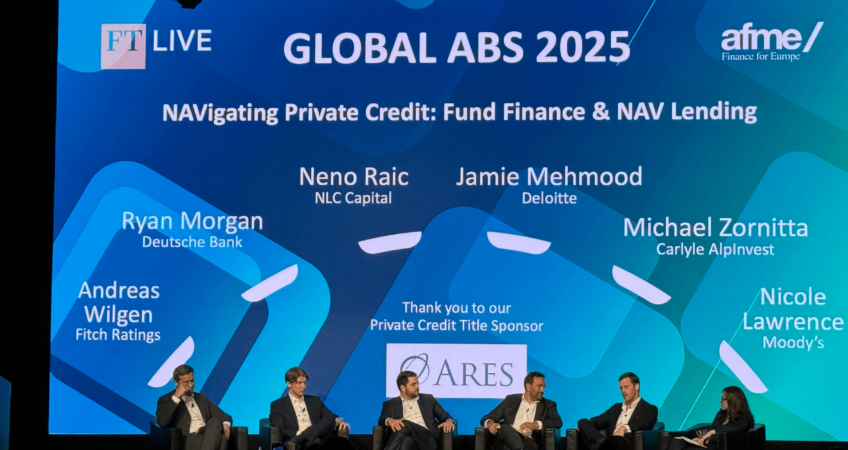
After a busy few days on the ABS circuit, one thing is clear: while macro conditions remain unsettled, structured credit markets across Australia, the UK and APAC are reshaping, quietly, but significantly.
Volatility in rates, geopolitics, and public credit markets has left many investors reassessing where and how to deploy. Yet demand for diversified, real-economy assets remain resilient. ABS has reasserted itself as a stable, scalable asset class and capital continues to rotate in.
This wave of capital, particularly into private credit strategies, is now reshaping how deals are priced, structured, and sequenced. The changes are most visible in six key trends:
The lowest-risk capital is crowded
Senior and senior-mezz capital, whether from banks or non-bank funds, is in heavy supply. A small number of players have a structural cost advantage, others are needing to adapt their offering to deploy. The growth in dry powder is relevant here: the private debt market has more than doubled in the last five years, with structured credit strategies growing 20–30% annually. That capital has filled out pockets of lower competition in the safest tranches, driving competition and tightening spreads.
Junior capital is getting more flexible and more bespoke
To gain traction in competitive processes, mezzanine and junior funders are offering more tailored structures: Holdco layers, equity-linked instruments, and blended capital stacks. Increasingly, funds are participating in matched or minority equity positions, not to lead rounds, but to secure deployment further up the capital structure. Many of these approaches are enabled by new hybrid mandates, raised specifically to operate across credit and equity boundaries. This is allowing more inventive structuring, especially in deals involving growth, non-prime assets, or operating transition.
Equity strategies are diverging and fuelling overdue consolidation
Across the region, platform responses to equity market conditions vary. Some are closing successful growth equity rounds with established sponsors. Others are blending in Holdco or hybrid capital to manage dilution or stage funding. A third group, where equity has proven harder to secure due to timing, positioning, or scale, are increasingly becoming M&A targets. Consolidation is being driven by strong platforms looking for origination access, servicing capability, or entry into adjacent markets. The dynamic feels overdue and it’s now well underway.
Forward flow is no longer confined to vanilla
Historically associated with prime portfolios, forward flow is now being deployed across a broader set of asset types. Originators are turning to it for capital efficiency, balance sheet relief, and reduced structuring friction. In many cases, forward flow is being chosen not because it’s cheaper (often it’s not) but because it can be faster, more scalable, and lighter to execute. The structure is now a standard tool in many live capital stack conversations.
Esoteric assets are complex but no longer unfamiliar
Assets like music royalties, litigation finance, and non-standard receivables still require specialist underwriting, but they are no longer seen as fringe. A growing cohort of funds, many with in-house expertise and real execution history, are now reliably funding these verticals globally. The market isn’t chasing every innovation, but for strong originators with the right structures, real capital is available to support novel products.
Fundability now depends on volume access
In recent years, too many platforms have chased the same digital leads, pushing up customer acquisition costs and funnelling large amounts of equity capital into brokers and comparison sites. Investors have taken notice. Increasingly, the most attractive originators are those with defensible, repeatable access to borrowers: proprietary channels, embedded partnerships, or exclusive referral arrangements. These originators aren’t just delivering credit, they’re delivering reliability. In a crowded origination landscape, that’s what stands out.



